The Thai Constellation monstera is one of the most sought after houseplants due to its stunning variegated leaves. This rare variation of the monstera deliciosa commands very high prices, especially for mature, well-established plants. But why is the Thai Constellation so unusually rare and desirable compared to the ordinary monstera deliciosa? Here are 5 key reasons.
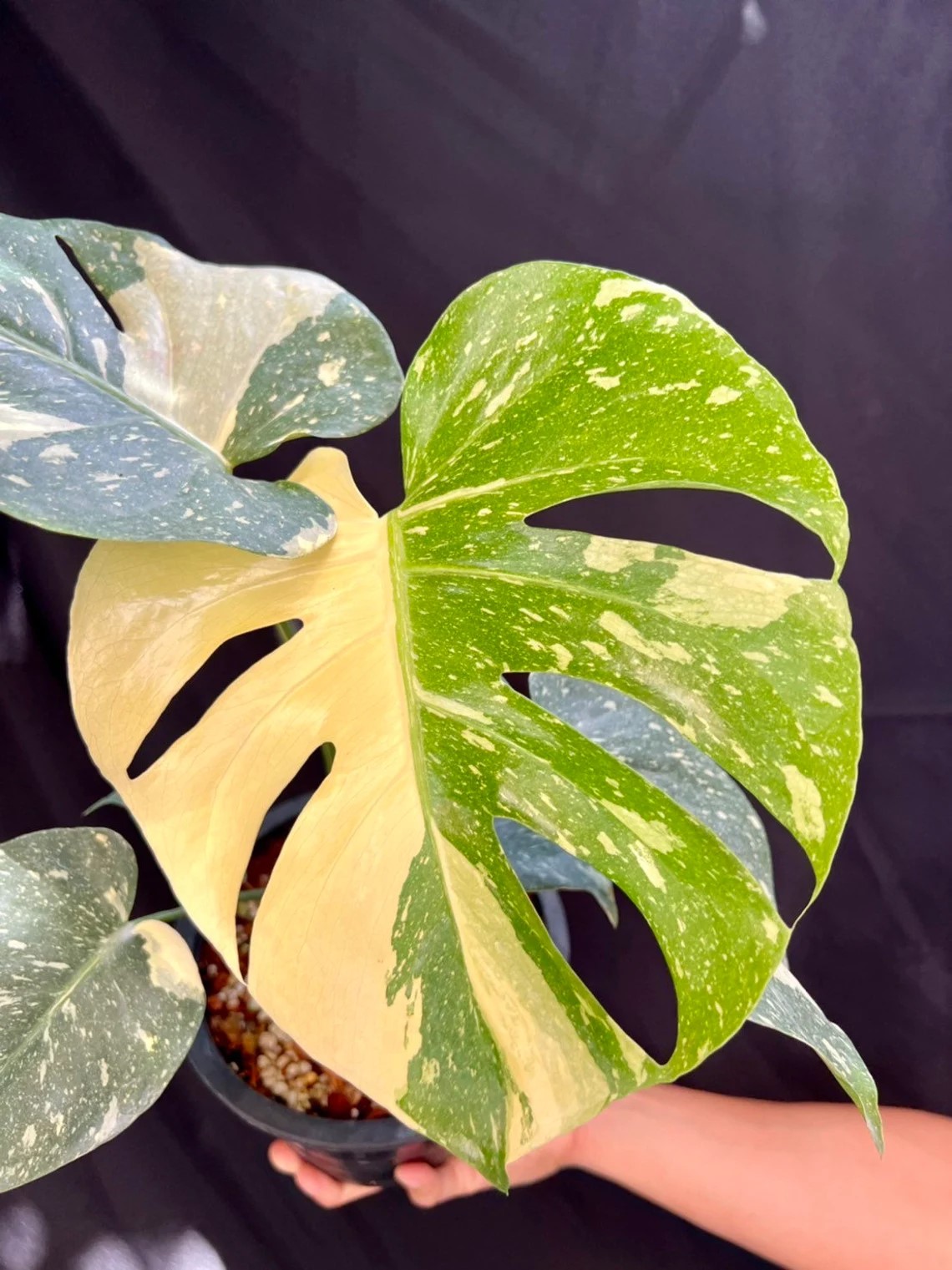
1. Its Variegated Foliage Has Very Low Occurrence in Nature
Only 1 in 100,000 Monstera Plants Are Variegated
Variegation is caused by a random genetic mutation that inhibits chlorophyll production in some areas of the leaves while allowing normal green pigment to develop in other areas. This creates the beautiful white or yellow splashes against the green background. However, this mutation only occurs by chance in about 1 in every 100,000 monstera plants grown from seed. So finding one with nice clean variegation is extremely uncommon.
Propagation Rate Is Very Low
To propagate the Thai Constellation commercially, growers have to take cuttings from an existing variegated plant. These cuttings root much more slowly compared to non-variegated monsteras. Additionally, only about 25% of the cuttings will carry on the variegated characteristics because keeping the instability of the foliage through propagation is difficult. This makes increasing their numbers very challenging.
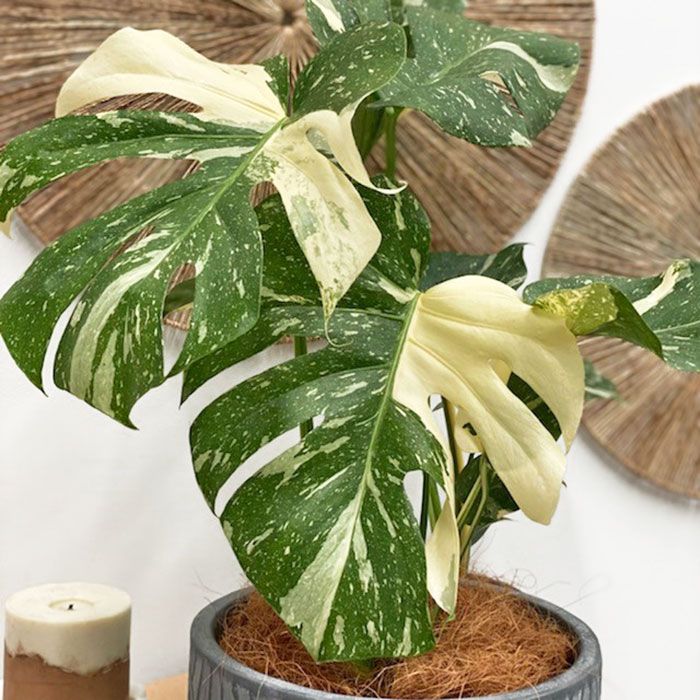
2. Slow Growth Rate Limits Availability
Matures Slowly Over Many Years
While ordinary monsteras are fast growing vines when given proper care and conditions, the Thai Constellation is much slower due to the inhibition of chlorophyll production. So starting from a small cutting, it can take over 3 years to reach maturity with only a few leaves. Their slow pace of growth constrains supply availability.
Requires High Light to Sustain Variegation
Getting the Thai Constellation enough light is crucial for it to be able to photosynthesize effectively to support itself despite lower chlorophyll levels. The more light it receives, the better it can maintain and stabilize variegation in new leaves and stems. Without adequate light, the plant may revert to all green or even decline. Providing high light year round further limits production capacity.
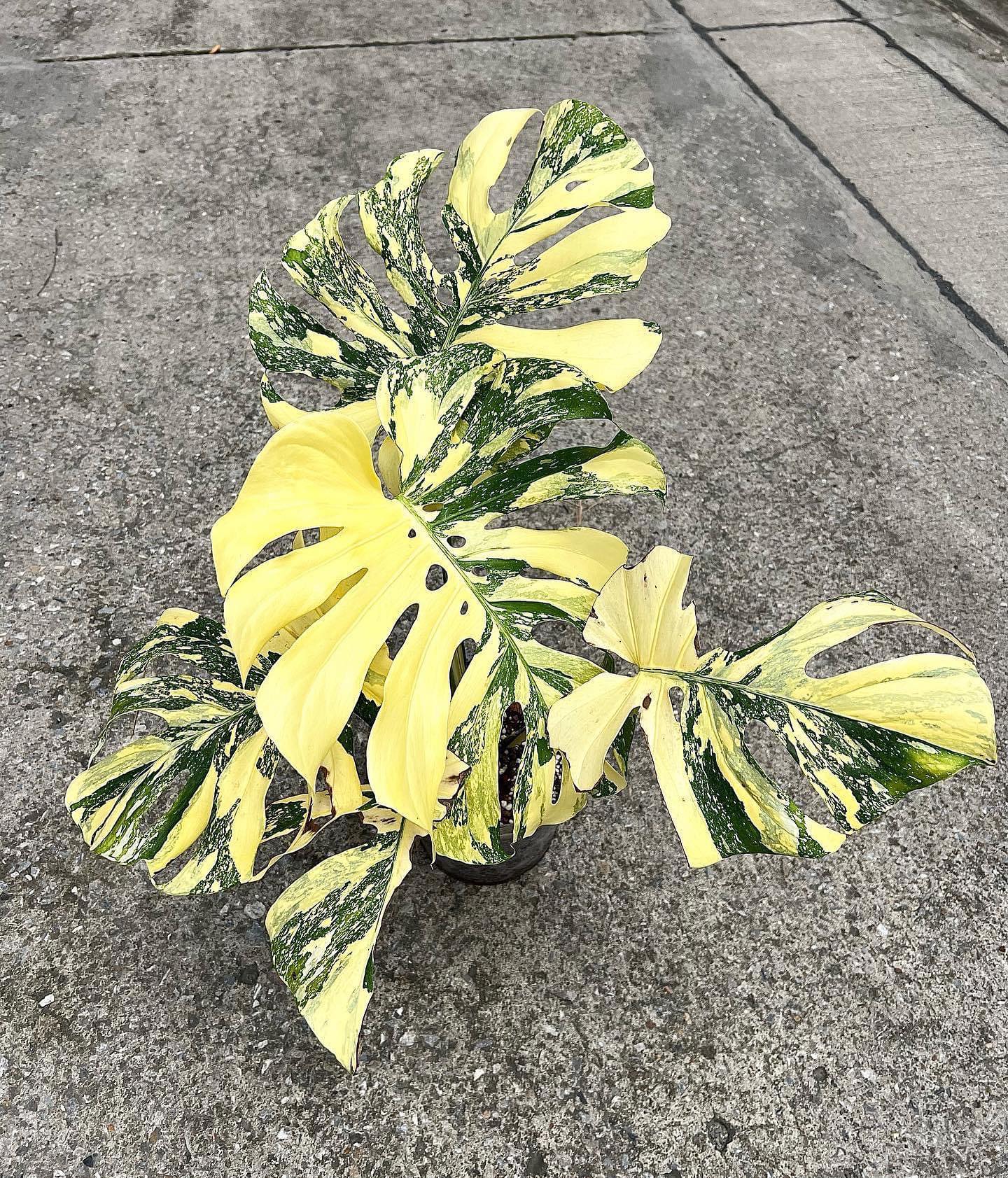
“Discover the unique charm of Monstera Thai Constellation today and elevate your space with its stunning foliage. Click to shop now and bring this exotic beauty home!”
3. Susceptible to Disease and Difficult to Care For
Sensitive to Overwatering and Fungi
The variegated Thai Constellation is more prone to root rot than the regular Monstera deliciosa. Overwatering can easily happen since moisture is retained longer around the slower growing roots. High humidity also makes it vulnerable to fungal diseases. Keeping its soil consistently and evenly moist but not soggy takes more controlled care.
Nutrient and Light Requirements Are Demanding
Achieving perfect variegated foliage requires getting nutrients and light levels exactly right. Too much or too little fertilization can tip the balance causing leaves to lose variegation. Managing appropriate light intensity and durations takes ongoing adjustments. Mastering the intricate growing conditions is challenging even for experienced collectors.
4. High Costs and Efforts to Maintain Mother Plants
Long Term Investment Over Many Years
Breeders have to invest significant time, effort, and money to build up mother plants that can be used as sources for cuttings. Keeping mature Thai Constellations requires facilities with precisely tuned lighting, humidity control, heating, and air circulation for many years running. The costs of real estate, utilities, equipment, tools, and labor are substantial for maintaining profitable commercial scale operations.
Risk of Losing Entire Crops to Disease or Disasters
Despite intensive care, entire crops can be wiped out by a bad case of fungi or bacterial infections. Power outages, floods, or other disasters can also destroy years of investment building up rare specimen plants. Rebuilding the lost genetic lineages that produce high grade variegation takes tremendous perseverance through potential heartbreaking losses.
5. Extreme Rarity Drives Auction Prices Over $1,000
Prestige and Obsession of Plant Collectors
Part of the reason prices skyrocket for top grade Thai Constellations is from the prestige and obsession to own exceptionally rare plants. Collectors vie to get the most unique patterns and colorations even if only small differences. Bidding wars at auction regularly reach into the multiple thousands of dollars for single leaves or small plants.

Status Symbol in Interior Design
The Thai Constellation has also become a status symbol displayed in luxury homes, hotels, and offices. Interior designers incorporate them into key centerpieces of exclusive spaces. Owners enjoy flaunting access to such rarely achieved plants. Even businesses pay large sums to attract clientele as a distinctive display of prestige in their establishments.
Where to buy Monstera Thai Constellation? Benefits from importing plants from Thailand
- Shipping: Door to door shipping, fast and safe with Dragon Courier
- Biodiversity: Thailand is known for its rich biodiversity, including a wide variety of aroid species. This diversity allows importers to access a broad range of unique and exotic aroid plants.
- Quality and Health of Plants: The suitable climate helps the plants grown here stay healthy and of high quality.
- Cost-Effectiveness: Due to favorable growing conditions and efficient production methods, Thai aroid plants can often be more cost-effective compared to those from other countries.
- Access to Hybrid Varieties: Thai growers are often involved in the development of new hybrid aroid varieties, offering unique plants that may not be available from other sources.
Monstera species are the most sought after by aroid plant lovers
Conclusion
Achieving the spectacular variegated leaves of the Thai Constellation monstera requires overcoming steep odds and difficulties at every stage. Rarity starts from unlikely genetic mutations in the first place. Propagation and cultivation barriers multiply its scarceness. The care and risks involved limit volumes grown. All these forces culminate in the reality of extremely high market values today either as serious collector pieces or as interior symbols of status for the privileged few. Their uniqueness, beauty, and sheer difficulty to obtain ensure Thai Constellations will continue to mesmerize plant enthusiasts for the foreseeable future.
FAQ
- What is the Thai Constellation Monstera, and why is it considered rare?
- The Thai Constellation Monstera is a unique and highly sought-after plant known for its distinctive white variegation on its leaves. It is considered rare due to the limited availability and the difficulty of maintaining its striking variegation.
- How can I obtain a Thai Constellation Monstera?
- Acquiring a Thai Constellation Monstera can be challenging due to its rarity. You may find them in specialized nurseries, plant auctions, or online marketplaces. Be prepared for a potentially higher price compared to regular Monstera varieties.
- Are there any tips for caring for a Thai Constellation Monstera to maintain its variegation?
- Yes, maintaining the variegation in Thai Constellation Monstera can be tricky. It requires bright, indirect light, proper watering, and occasional pruning to remove solid green leaves. Keeping it in a stable environment is key to preserving its unique appearance.
- How does the rarity of the Thai Constellation Monstera affect its market value?
- The rarity of this plant significantly influences its market value. Thai Constellation Monstera plants are often more expensive than other Monstera varieties due to their scarcity and high demand among plant collectors.
- Can I propagate a Thai Constellation Monstera to increase its availability?
- Yes, you can propagate a Thai Constellation Monstera through stem cuttings. However, variegation can be less stable in the new growth, and it may revert to solid green. Propagation is possible but may not always result in plants with the same level of variegation as the parent plant.
See more Monstera Albo vs Thai Constellation: 4 Differences to Know!

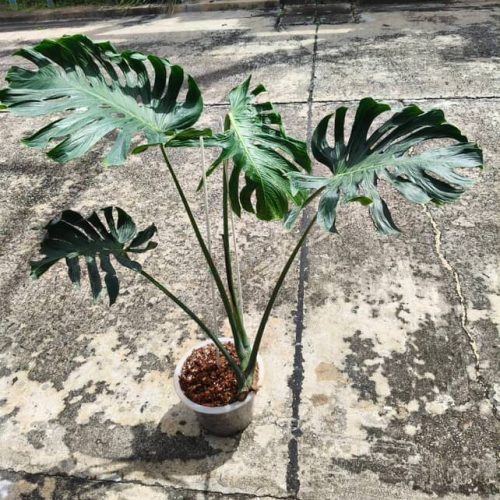
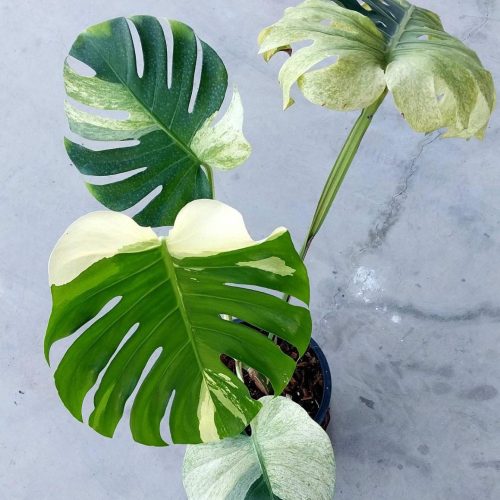



![12x Monstera Borsigiana Albo half leaves variegata [3-4 leaves]](https://greenboog.com/wp-content/uploads/2024/10/Monstera-Borsigiana-Albo-half-leaves-variegata-1-500x500.jpg)
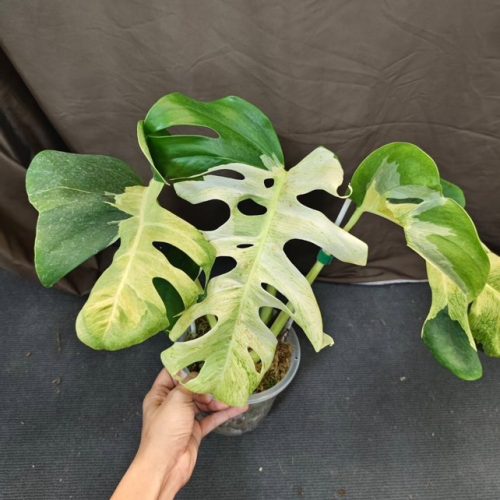

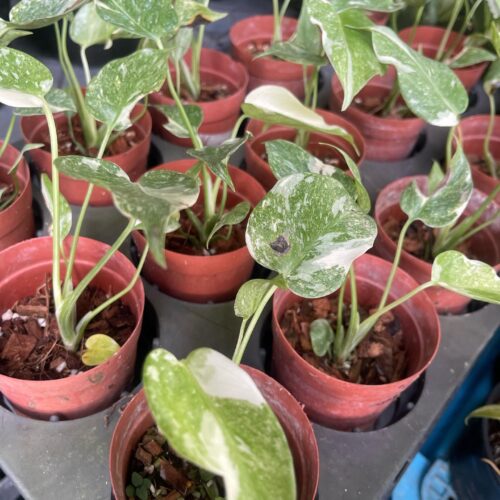
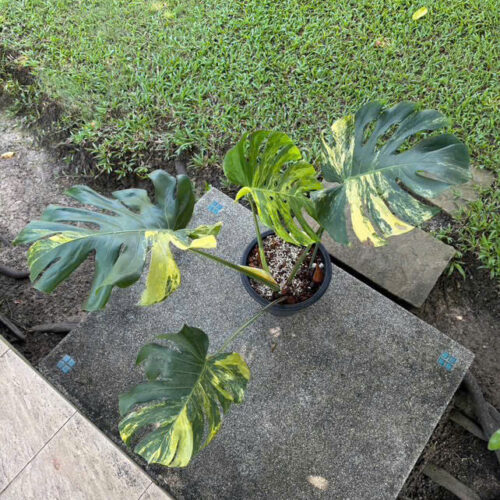
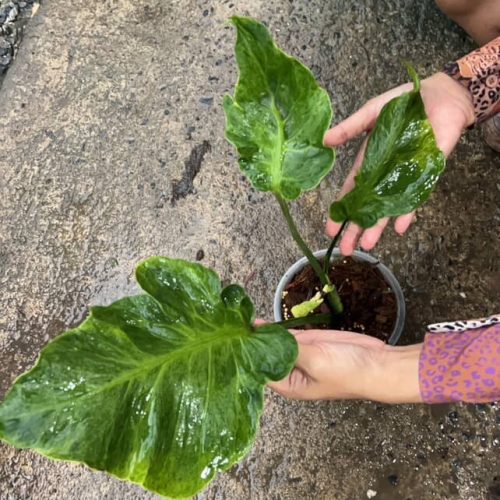
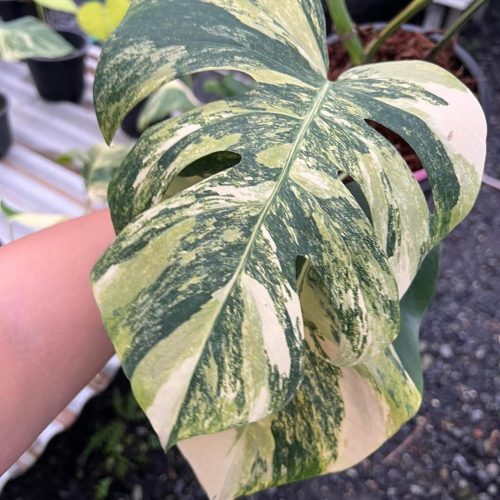

![10 Pots x Monstera Aurea Variegated / Mix Aurea tri color 3-4 leaves [well variegated]](https://greenboog.com/wp-content/uploads/2024/08/Monstera-Aurea-Tri-color-500x500.jpg)

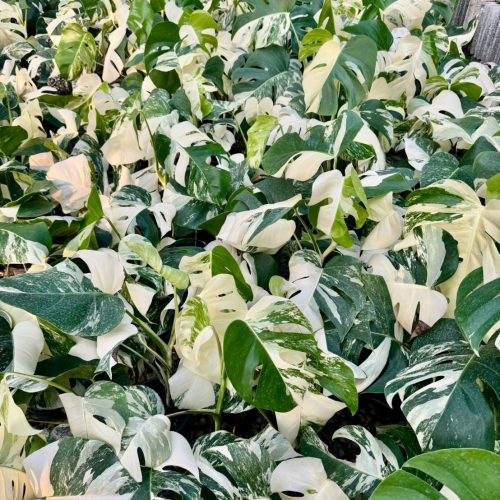


![[SALE] 10 Pots x Monstera Aurea Variegated 3-6 leaves [Medium size]](https://greenboog.com/wp-content/uploads/2025/01/Monstera-Aurea-variegated-4-6-leafs-500x482.jpg)

